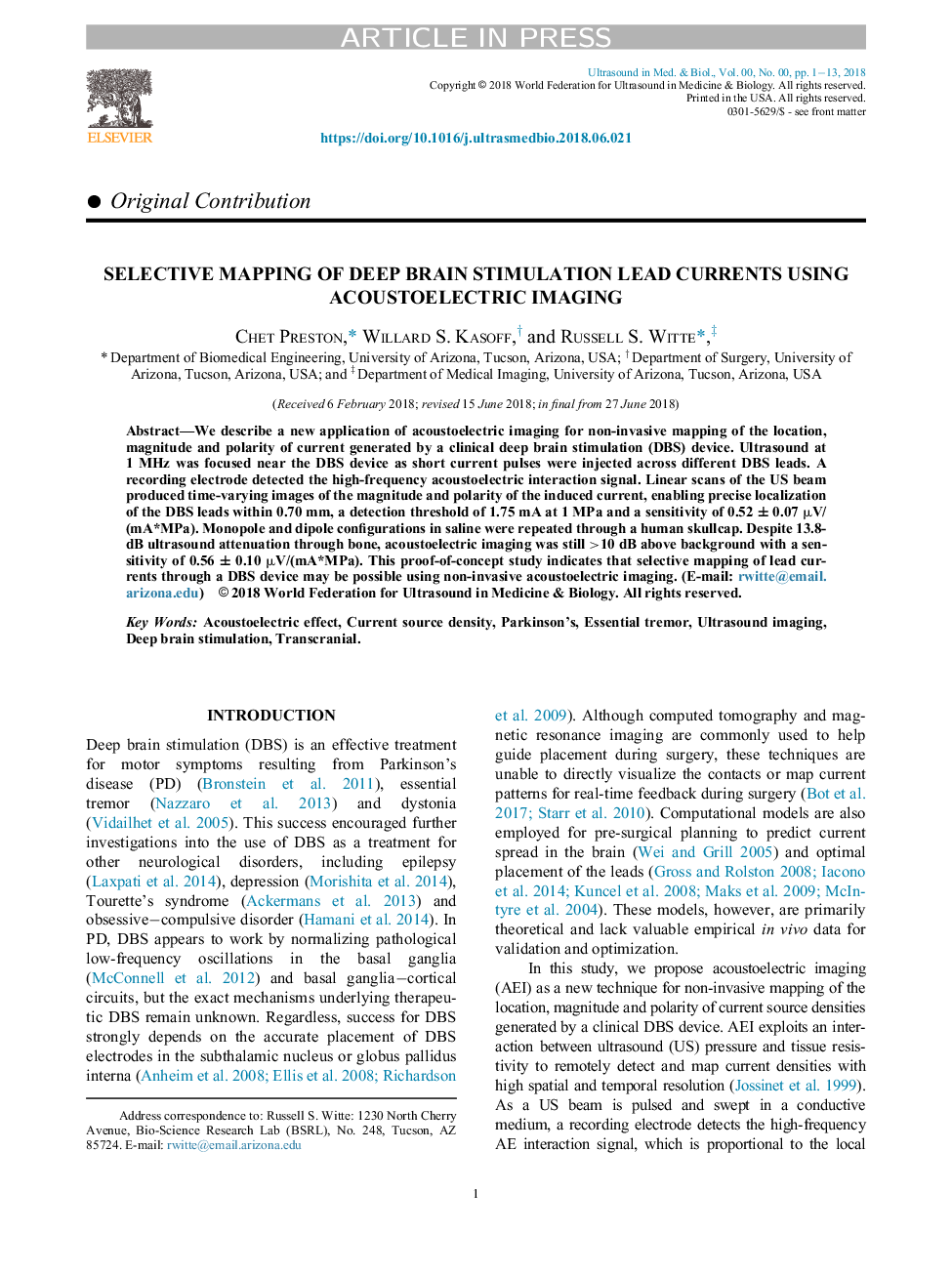| Article ID | Journal | Published Year | Pages | File Type |
|---|---|---|---|---|
| 10227100 | Ultrasound in Medicine & Biology | 2018 | 13 Pages |
Abstract
We describe a new application of acoustoelectric imaging for non-invasive mapping of the location, magnitude and polarity of current generated by a clinical deep brain stimulation (DBS) device. Ultrasound at 1MHz was focused near the DBS device as short current pulses were injected across different DBS leads. A recording electrode detected the high-frequency acoustoelectric interaction signal. Linear scans of the US beam produced time-varying images of the magnitude and polarity of the induced current, enabling precise localization of the DBS leads within 0.70mm, a detection threshold of 1.75mA at 1 MPa and a sensitivity of 0.52 ± 0.07 μV/(mA*MPa). Monopole and dipole configurations in saline were repeated through a human skullcap. Despite 13.8-dB ultrasound attenuation through bone, acoustoelectric imaging was still >10dB above background with a sensitivity of 0.56 ± 0.10 μV/(mA*MPa). This proof-of-concept study indicates that selective mapping of lead currents through a DBS device may be possible using non-invasive acoustoelectric imaging.
Keywords
Related Topics
Physical Sciences and Engineering
Physics and Astronomy
Acoustics and Ultrasonics
Authors
Chet Preston, Willard S. Kasoff, Russell S. Witte,
